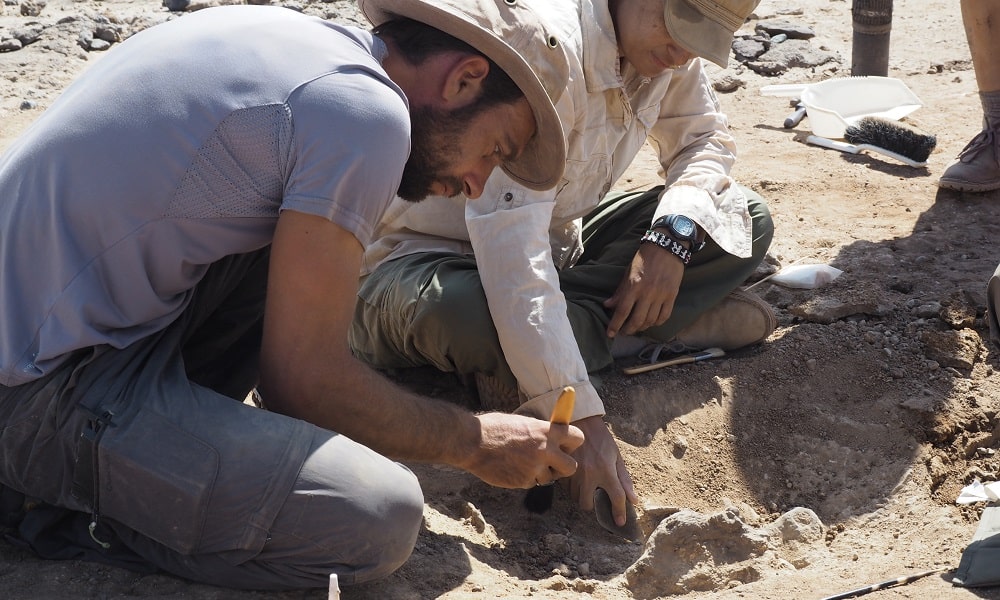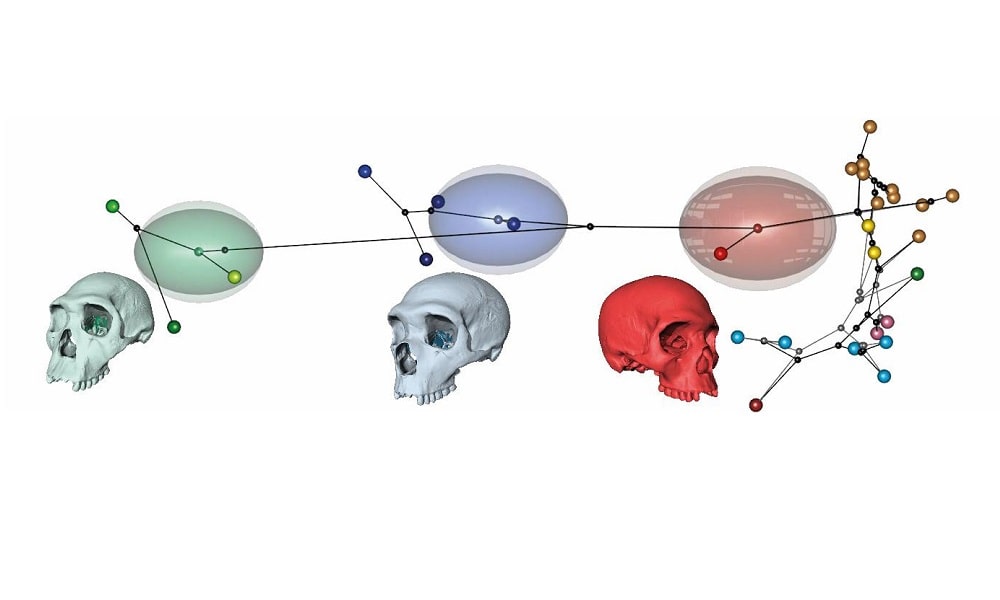Interview with Aurélien Mounier, a paleoanthropologist using 3D printing
Posted By Lucie Gaget on Jul 3, 2019 | 0 comments
We talked with Aurélien Mounier, a researcher at the CNRS and working at the Musée de l’Homme in Paris about his use of 3D modeling and printing technology. He shares with us an overview of his work as a paleoanthropologist, tells us about his use of 3D modeling, his collaboration with Sculpteo’s online 3D printing service, and the opportunities offered by 3D printing in his daily work!
- Can you present yourself?
I’m Aurélien Mounier, a researcher at the CNRS and working at the Musée de l’Homme in Paris, in a researchers team, the UMR7194 HNHP (Histoire Naturelle de l’Homme Préhistorique). I am a paleoanthropologist, meaning that I am working on researches concerning human evolution.
More specifically, I am interested in the last part of our lineage: the history of the Homo genus, which started 2 million years ago. What we call the Homo genus encompasses several extinct species (Homo habilis, Homo erectus, Homo ergaster, Homo heidelbergensis and Homo neanderthalensis, for example) together with our species Homo sapiens. All these extinct species are actually closer to us than other species such as the australopithecines.
- In which context are you using 3D?
Traditionally, paleoanthropologists are working on anatomy, and bones morphology as bones are the main tissues that preserve in the fossil record. We do morphological comparisons of these fossils with actual humans or chimpanzees.
In the past few decades, the development of new technologies has helped us to quantify these specimens’ morphology using analytical methods which take into account the morphology in three-dimensions. This is why I am now using 3D scanning to work on 3D models.
- Regarding the creation of your 3D models, why do you use photogrammetry?
There are several options to get a 3D model. It is possible to use 3D scans from tomography or photographs to recreate the volume of an object in 3D. The advantage of photogrammetry, compared to other techniques, is its price: it is a low-cost technic. A good camera is enough to collect data and software to recreate the objects from pictures is not expensive.
Then, it is quite easy to transport the gear to take pictures, allowing to use photogrammetry during missions in museums, but also in the field. For example, when I do archeological excavation in the north of Kenya, it is an arid area, difficult to access, and on the spot, there is no infrastructure (road, or electricity…)
Photogrammetry allows creating a 3D model with high quality regarding the shape, but also the texture of the bones. It is made possible because the model is created from high-quality pictures.
- What 3D software are you using?
For photogrammetry, I am using Metashape by Agisoft, this software allows creating 3D models from pictures. For the treatment of these 3D models before analyzing them I use Meshlab, an open source software. 3D models obtained from photogrammetry, 3D surface scans or computed tomography often have some defects. Then, for analysis and modeling, I use the R software.
- How is 3D present in your work, and how is it helping you with your projects?
3D is really important in my work. First of all, 3D allows me to carry my fossils with me. Indeed, it is impossible for us to bring back fossils from Kenya for research purposes. 3D models allow me to bring them back and work on them here.
Then, most of the analyses that I am doing now are made with 3D geometric morphometrics. This technique allows working on exclusively the shape of the specimen, avoiding the effect of the size on the shape.
For example, with two specimens from the same population, there can be some differences concerning the morphology that might just be caused by a difference of size: if one is really tall, the morphology will necessarily be different. Using geometric morphometrics is a way to only focus on the shape.
I work with 3D modeling in order to estimate the hypothetical morphology of ancestors. These 3D models are a way to generate possible ancestors and create virtual fossils. Then, they can be compared to the actual fossil.
Representation of the phylogenetic of the Homo genus in the morphological space. In green: the first representatives of the Homo genus, in blue Homo neanderthalensis, and finally, Homo sapiens. These 3D models are representating virtual ancestors for these three groups.
- Why did you start to use 3D printing?
3D printing is really important to study fossils coming from abroad. Indeed, we can bring back the fossil virtually and 3D print it to get a new physical version of it. With Sculpteo we recently 3D printed a fossil from Kenya. Fossils that I am also working on with 3D modeling can also be 3D printed and studied like real ones.
- Did you use 3D printing for previous projects?
In 2016, in collaboration with professor Marta Mirazón Lahr from Cambridge University, I published a phylogenetic model in order to estimate the morphology of common ancestors of modern humans and Neanderthals.
The virtual fossil allowed us to visualize his morphology, but these kinds of 3D printing projects can be used to do some science popularization and interest more people with our researches.
I would like to do this more largely and print more fossils so people can get a better understanding of what we do.
- What 3D printing technologies are you using for your work?
I was previously using FDM technology, to print with PLA filament. Now that I work with Sculpteo, I am using the SLS technology.
- Can you tell us more about your collaboration with Sculpteo?
The work of paleoanthropologists is more and more going through a digital filter. But it is important to keep in mind that we are anatomists and that our work is the compare morphologies. By 3D printing rare specimens that we can’t access easily, we bring bones back in the analysis process.
Finally, by 3D printing virtual fossils we created, we literally create new parts, representing possible morphologies of the history of our species.
Do you have a 3D printing project? Feel free to upload your 3D file on our online 3D printing service, or contact us if you have any questions.
Subscribe to our newsletter to get more interviews of 3D printing users and discover some great applications of additive manufacturing.


 Connect with Google
Connect with Google Connect with Facebook
Connect with Facebook
